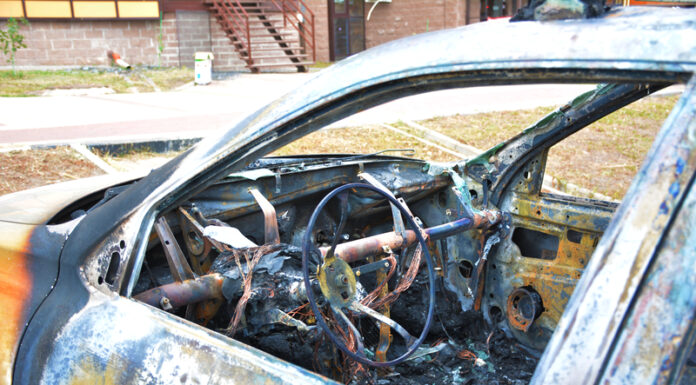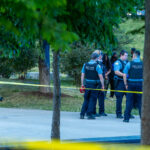A coordinated wave of explosions and gun attacks struck southwestern Colombia on June 10, 2025, killing at least seven people and injuring dozens more in what authorities described as a systematic assault targeting police installations across multiple cities and towns.
The attacks occurred in Cali, Colombia’s third-largest city, and several municipalities in the departments of Cauca and Valle del Cauca. Colombian National Police reported more than 20 terrorist attacks throughout the day, including car bombings, firearm attacks, and the launching of explosive devices.
At least two police officers were among those killed, while a mix of civilians, military personnel, and police comprised the 28 people injured, according to police reports. The death toll varied slightly across official sources, with some agencies reporting up to seven fatalities and as many as 50 wounded.
In Cali, Mayor Alejandro Eder confirmed that three explosive devices were detonated in the Los Mangos area near the Meléndez police station and at the Manuela Beltrán Immediate Attention Center, a police substation. Eder later declared the situation “under control” and ordered security forces to deploy throughout the city.
National Police Chief Carlos Fernando Triana indicated that assailants used car bombs, motorcycle bombs, rifle fire, and a suspected drone in their coordinated assault. The attacks extended beyond Cali to the nearby towns of Corinto, El Bordo, Jamundi, Villa Rica, and Guachinte, where additional explosions damaged municipal buildings and caused civilian casualties.
Colombian military officials attributed the attacks to the Estado Mayor Central, a guerrilla faction that remained active after the Revolutionary Armed Forces of Colombia signed a peace agreement with the government in 2016. However, the army did not provide evidence for this claim, and the group has not claimed responsibility for the attacks.
In a statement released on June 10, Estado Mayor Central accused Colombia’s government of reneging on the peace process and issued guidance to civilians on avoiding crossfire situations. The group warned the public to stay away from military and police installations but stopped short of claiming responsibility for the violence.
Defense ministry officials reported that military forces successfully prevented six additional attacks and captured two individuals who were preparing explosives. Video footage from the aftermath showed exploded vehicles still burning and scorched debris scattered across streets, with crowds of pedestrians gathering around blast sites as emergency sirens sounded.
The timing of the attacks proved particularly significant, occurring just three days after the attempted assassination of conservative Senator Miguel Uribe Turbay in Bogotá. The 39-year-old presidential candidate was shot twice in the head at close range by an alleged 15-year-old hitman during a campaign event on June 7. Uribe remained in critical condition as of June 10, with his hospital reporting that he was stable but required ongoing medical intervention.
Colombian President Gustavo Petro requested assistance from U.S. authorities to investigate the Uribe shooting, stating that the suspect’s weapon was purchased in Arizona. A 15-year-old suspect pleaded not guilty to attempted murder charges in connection with the assassination attempt.
The wave of violence has heightened concerns among Colombians about a potential return to the intense violence of the 1980s and 1990s, when cartel attacks, guerrilla violence, and political assassinations were commonplace. Mayor Eder referenced this period, noting that attackers wanted to return the country to conditions similar to 1989, including the assassination of presidential candidate Luis Carlos Galán.
Security analysts described the attacks as a well-coordinated offensive demonstrating the guerrilla group’s operational capacity in urban areas. Elizabeth Dickinson of the International Crisis Group noted that the attacks indicated these organizations’ interest in destabilizing urban security beyond their traditional rural strongholds where they access illicit economies.
Valle del Cauca Governor Dilian Francisca Toro urged President Petro to convene the country’s Security Council to respond to what she termed the current escalation of terrorism. Colombian Vice President Francia Márquez Mina condemned the violence, stating that it was unacceptable to instill fear in people and then offer security.
The attacks occurred one day before President Petro was scheduled to visit Cali for a public demonstration organized by labor unions supporting his proposed labor reform. The timing raised additional security concerns for government officials operating in the affected region.
Colombia’s government has struggled to maintain control over territory abandoned by FARC rebels following their 2016 peace agreement, with various armed groups attempting to fill the vacuum. Peace negotiations between the Estado Mayor Central faction and the government collapsed in 2024 following a series of attacks on Indigenous communities.








